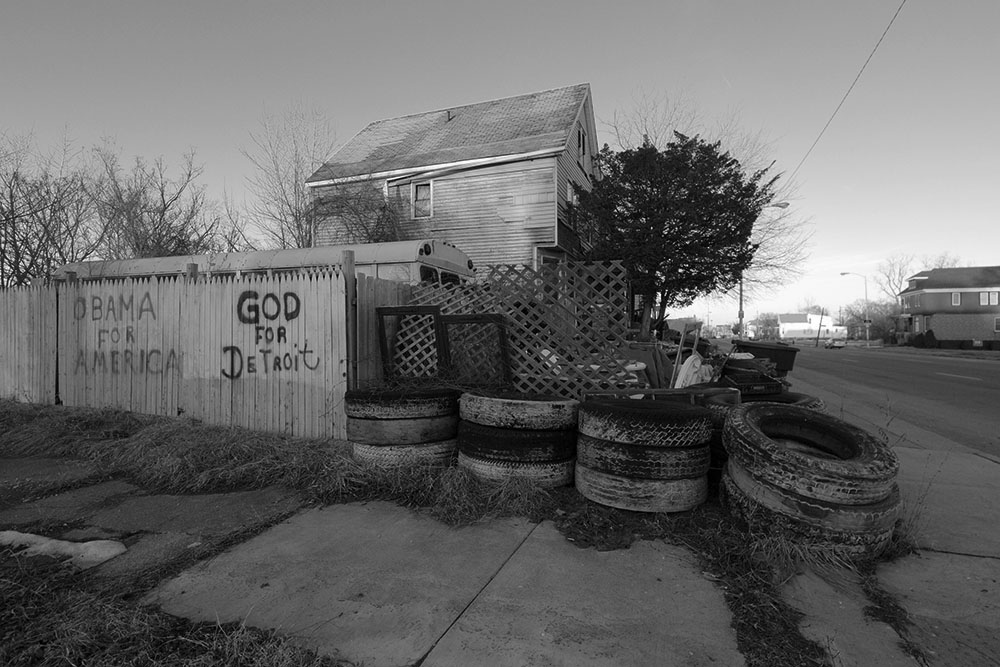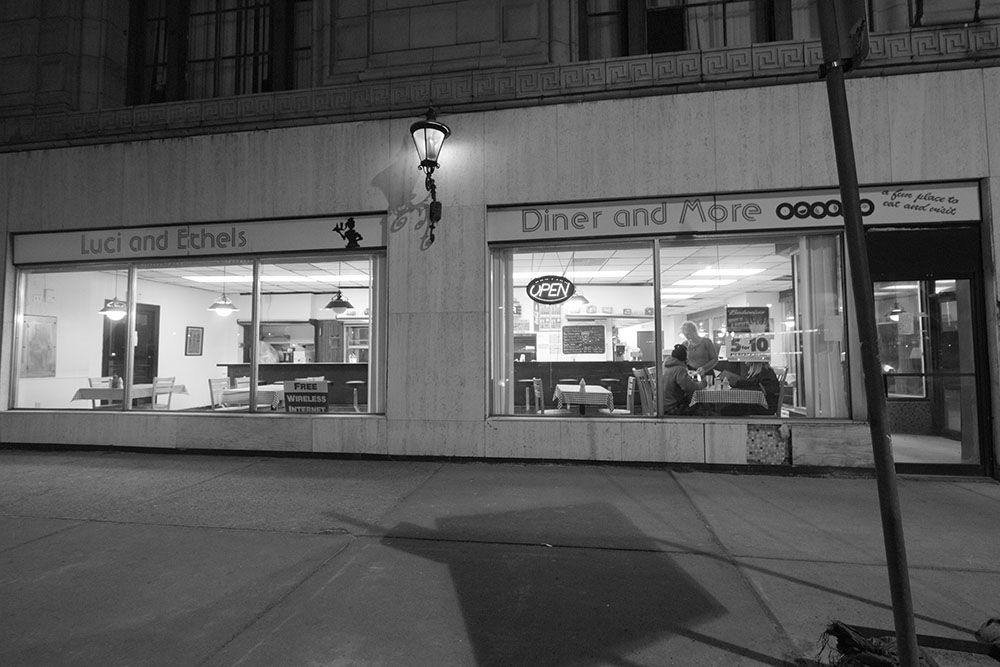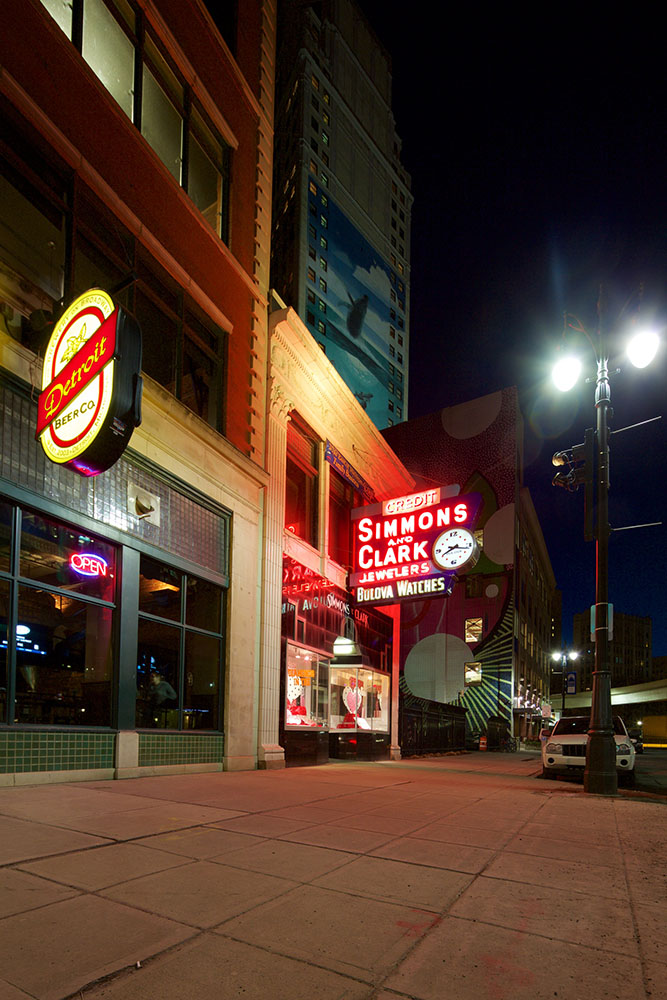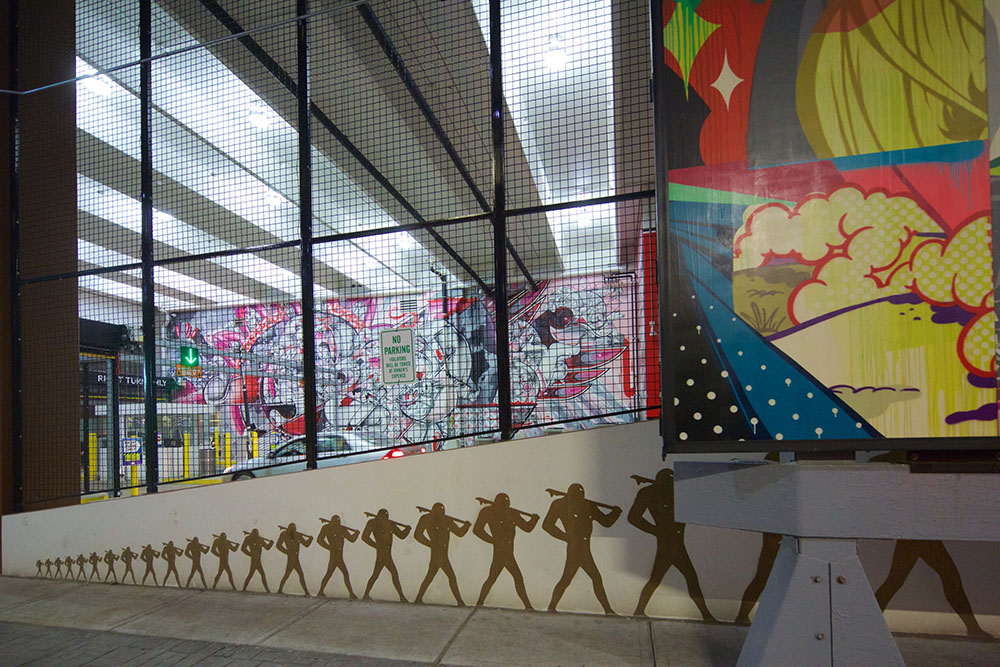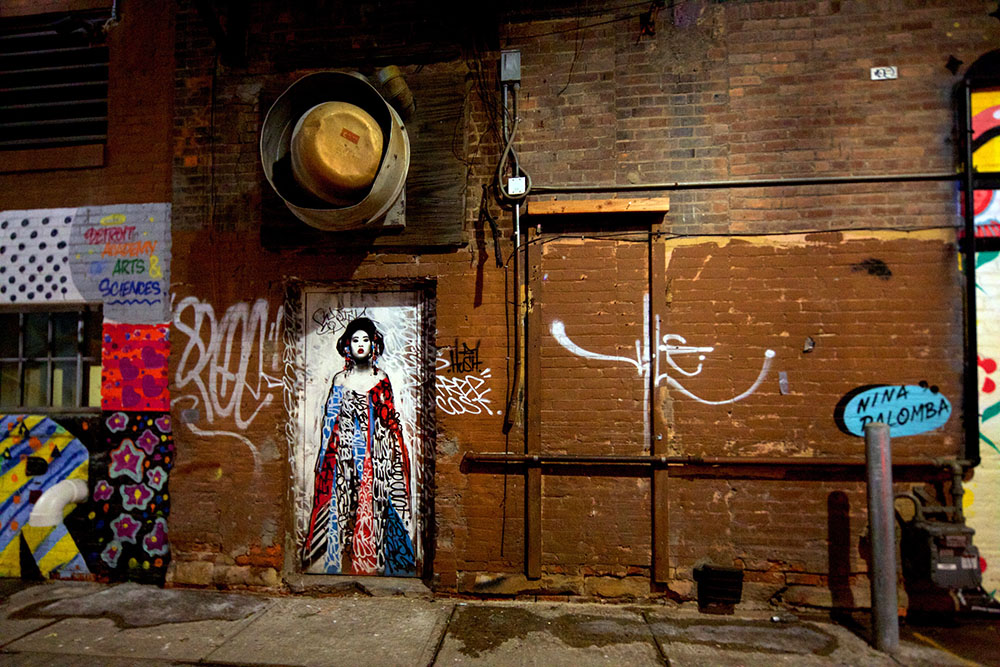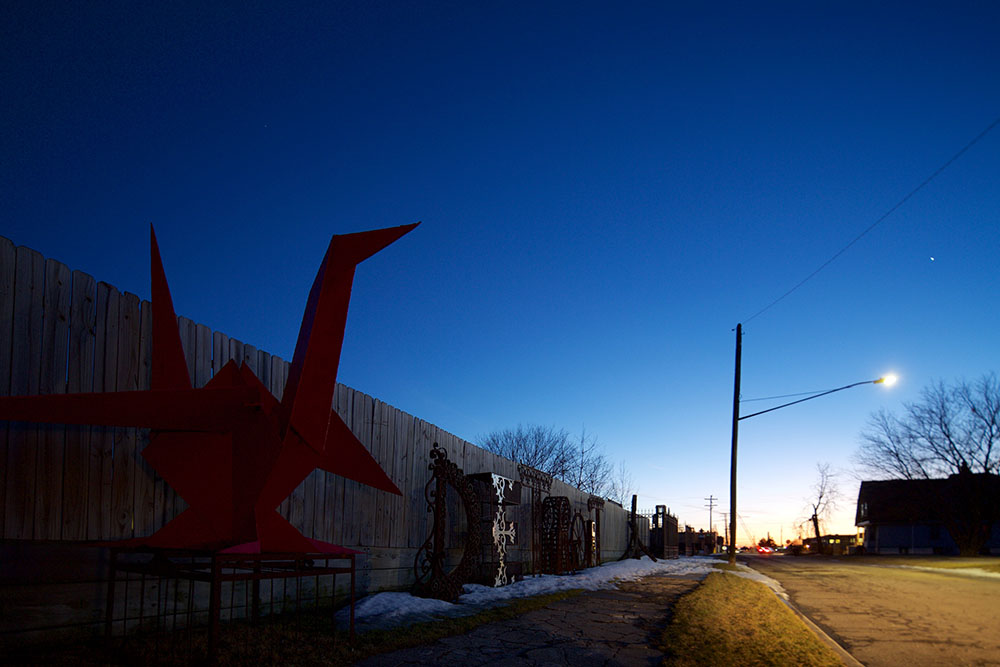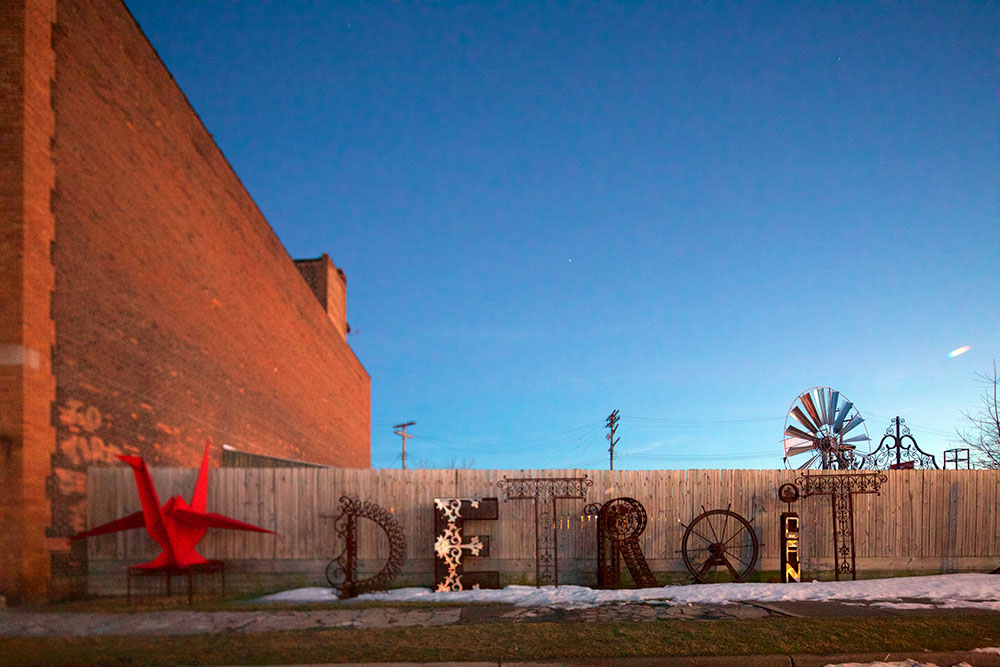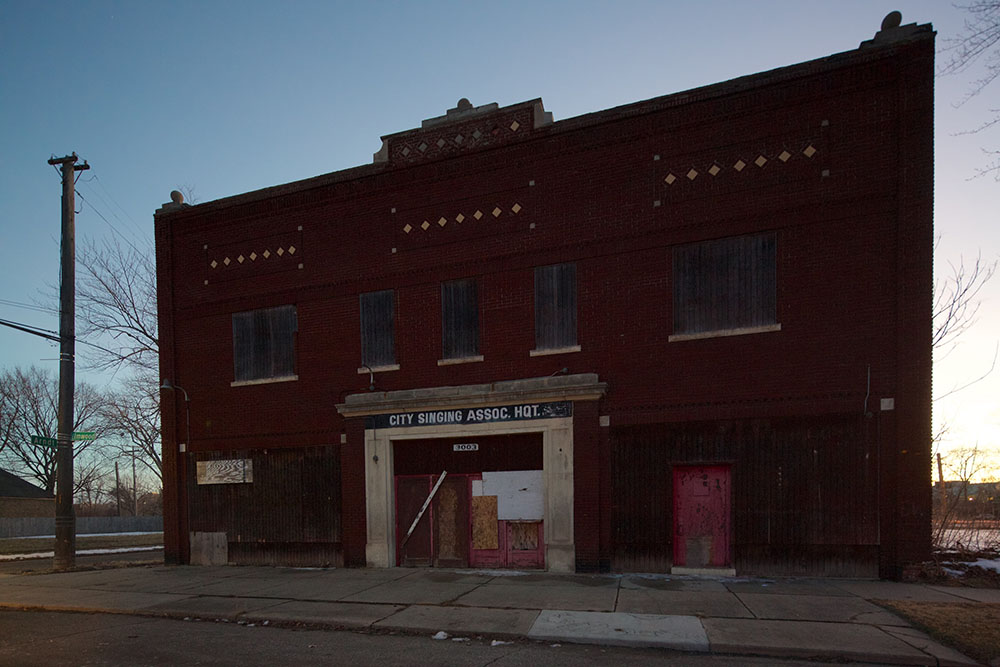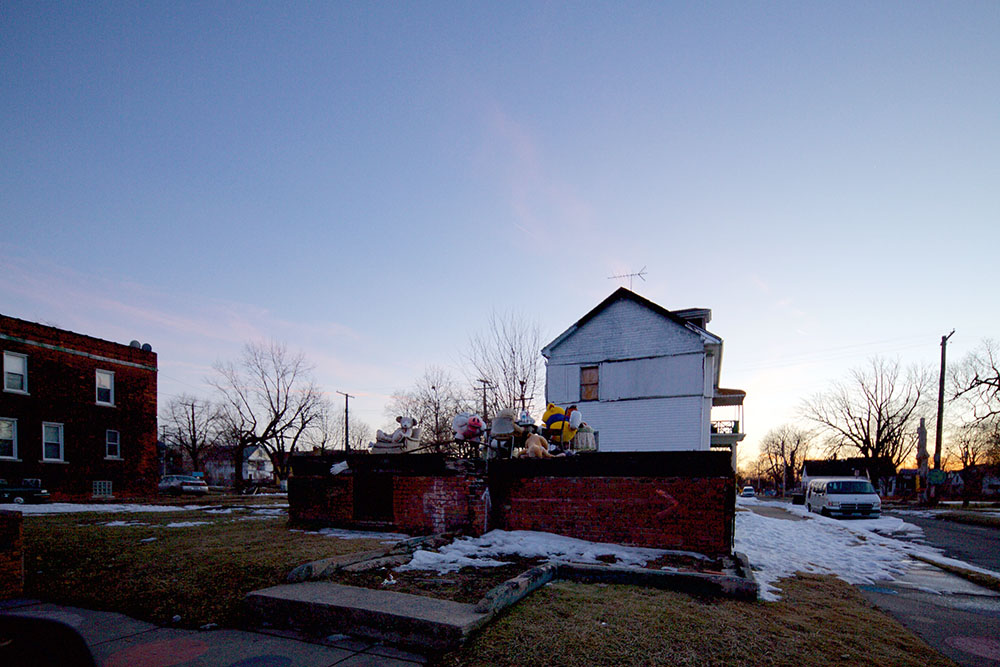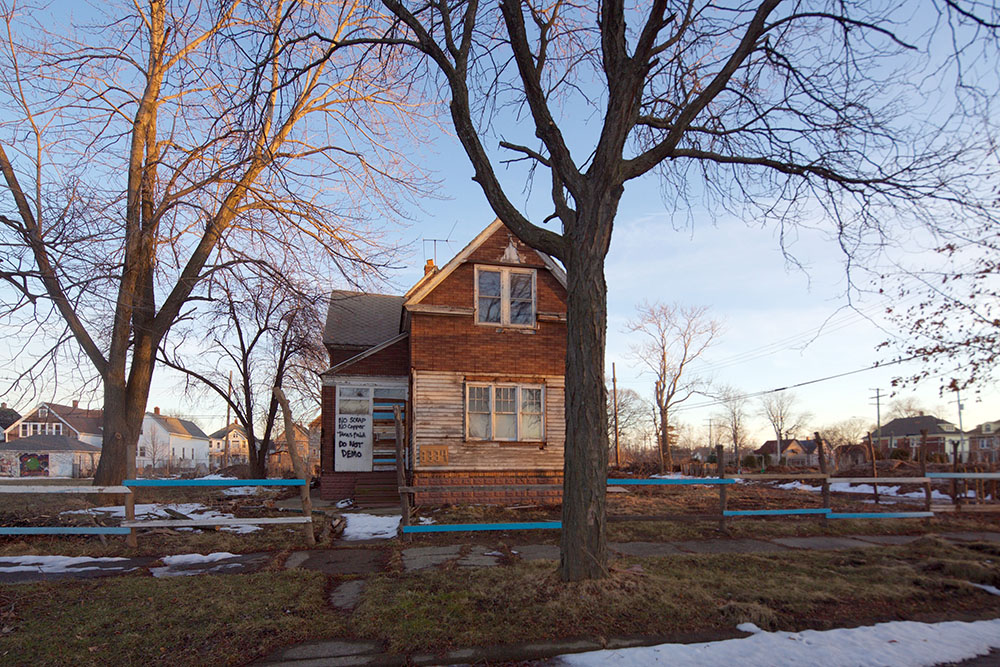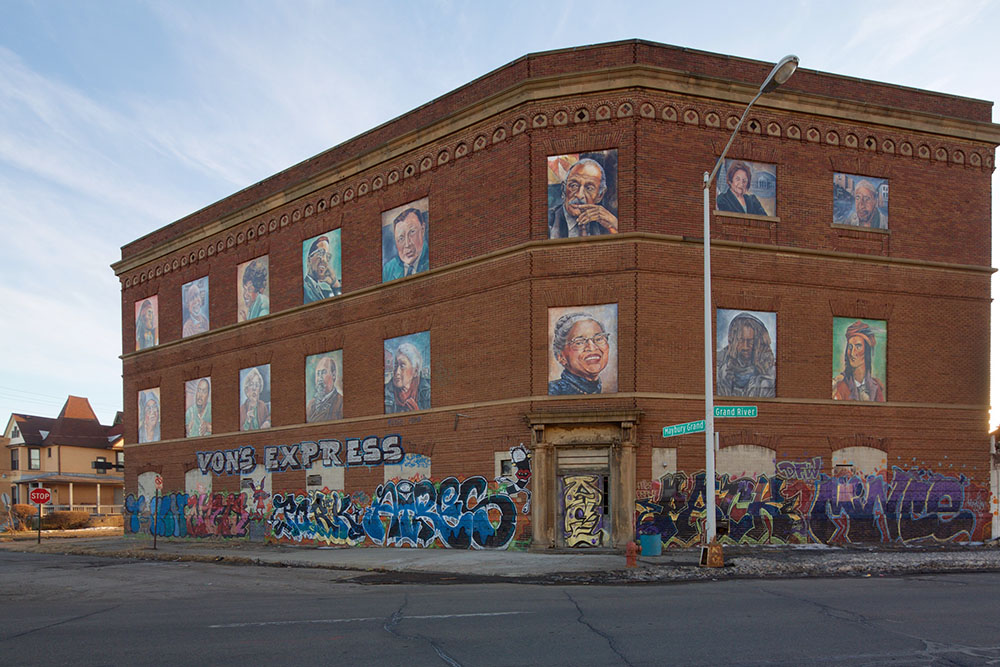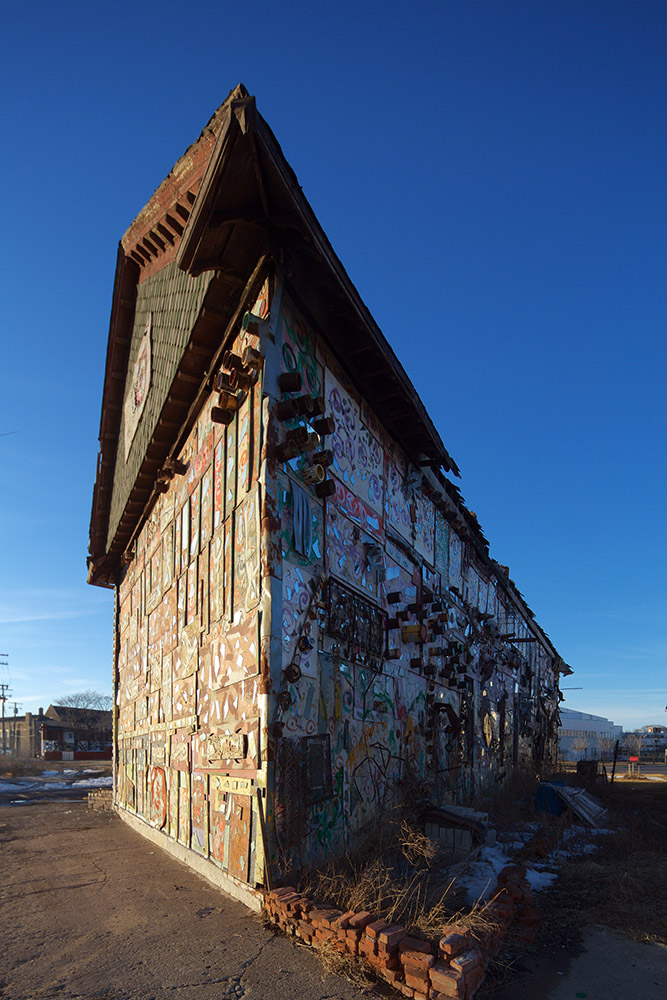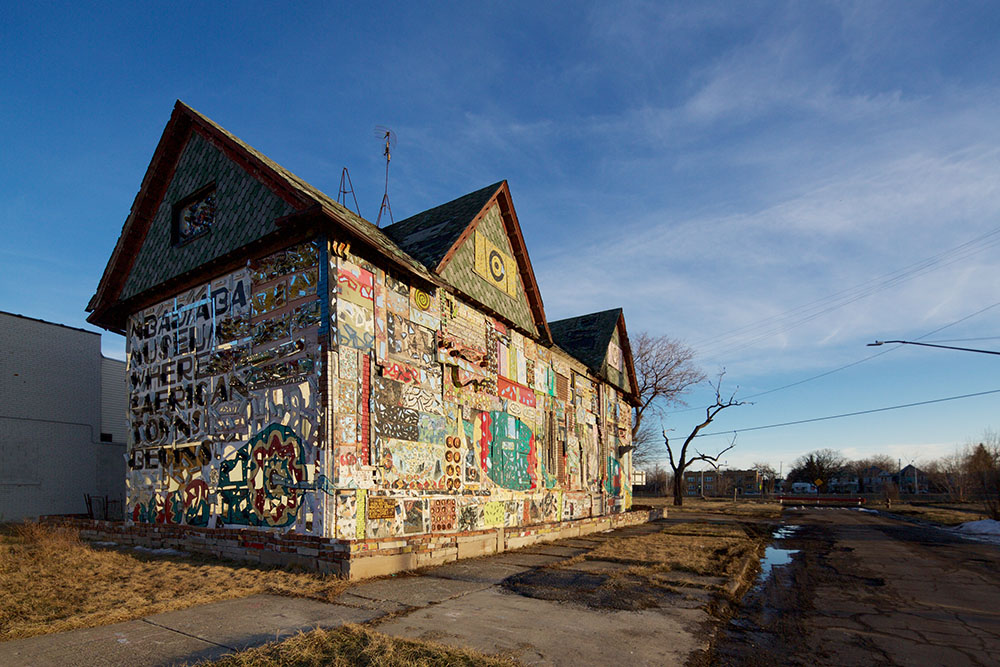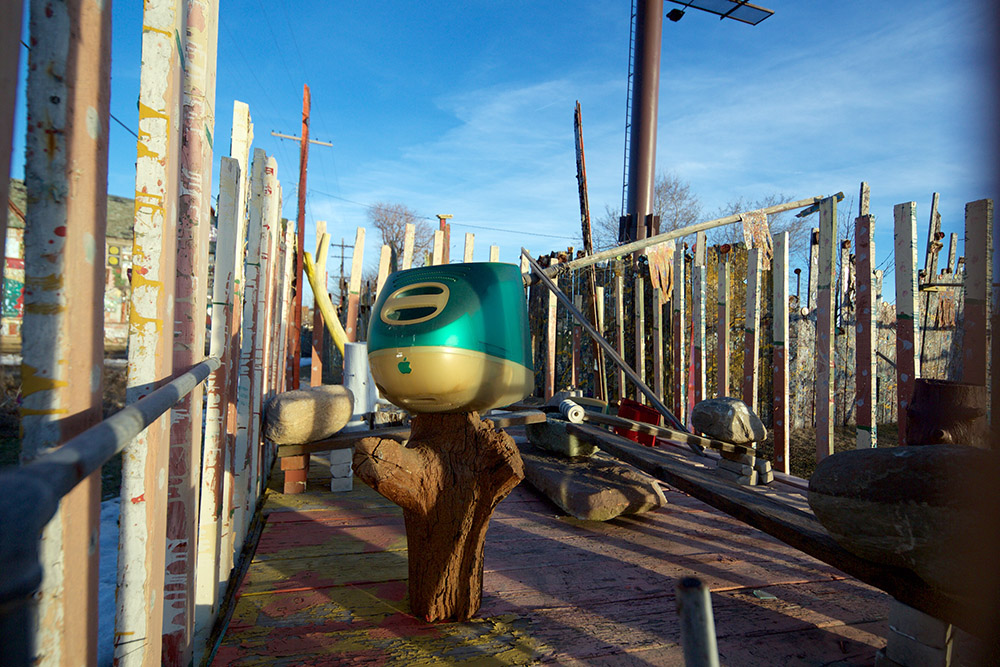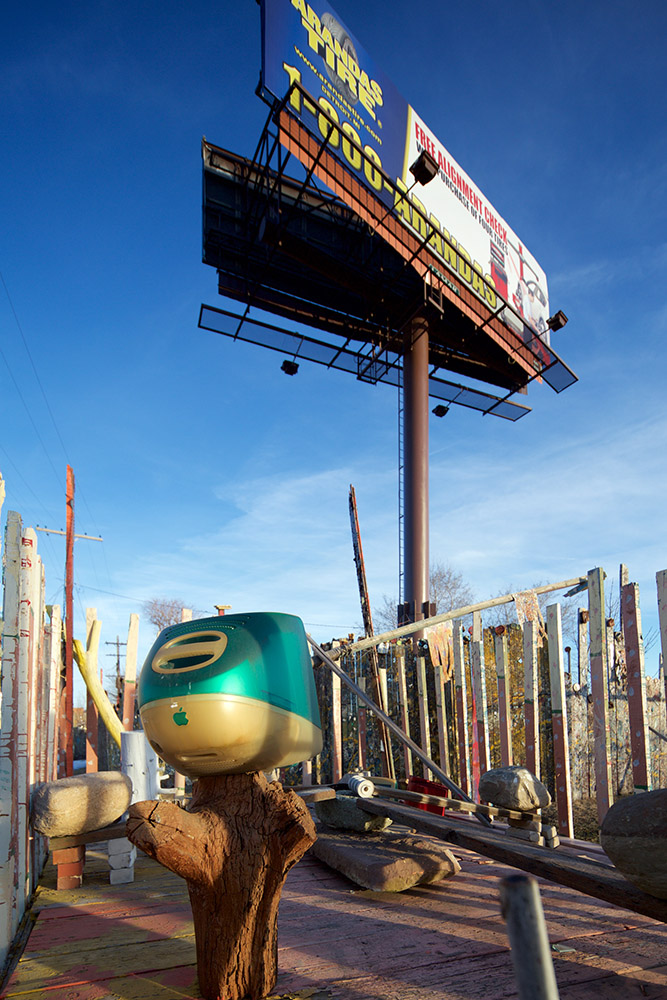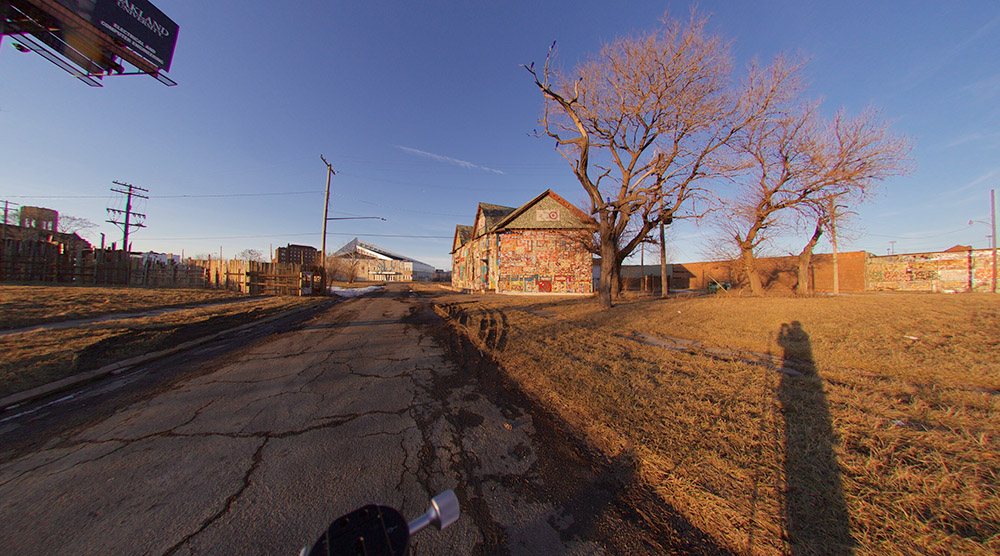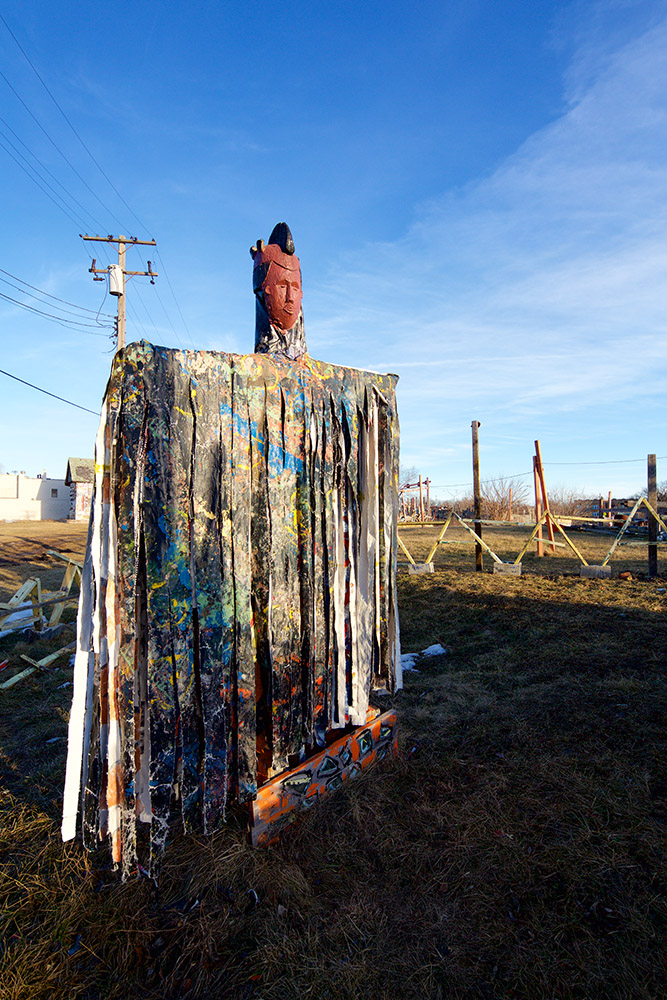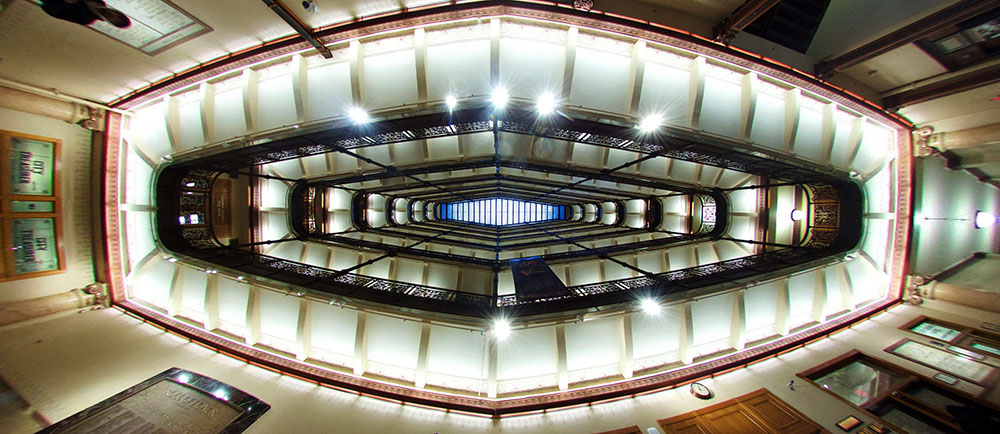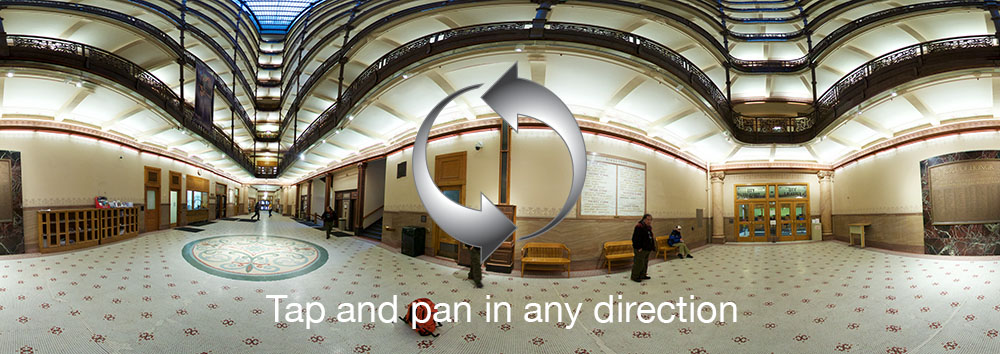Olson has spent a lifetime exploring the subtle ways of tricking people’s perception, and it all began with magic. “I started magic tricks when I was five and performing when I was seven,” he says.
As an undergraduate in psychology, he found the new understanding of the mind often chimed with the skills he had learnt with his hobby. “Lots of what they said about attention and memory were just what magicians had been saying in a different way,” he says.
One card trick, in particular, captured his imagination as he set about his research. It involved flicking through a deck in front of an audience member, who is asked to pick a card randomly. Unknown to the volunteer, he already worked out which card they would choose, allowing him to reach into his pocket and pluck the exact card they had named – much to the astonishment of the crowd.
“Obama for America, God for Detroit”; “Please do not demo….”
Dabl’s African Bead Gallery
Milwaukee City Hall (1895) Panorama
Detroit’s Heidelberg Project


It’s an open-air art environment in the heart of an urban community on Detroit’s East Side. Tyree Guyton, founder and artistic director, uses everyday, discarded objects to create a two block area full of color, symbolism, and intrigue. Now in its 29th year, the Heidelberg Project is recognized around the world as a demonstration of the power of creativity to transform lives.
How Millennials Get News: Inside the habits of America’s first digital generation
Much of the concern has come from data that suggest adults age 18-34 — so-called Millennials — do not visit news sites, read print newspapers, watch television news, or seek out news in great numbers. This generation, instead, spends more time on social networks, often on mobile devices. The worry is that Millennials’ awareness of the world, as a result, is narrow, their discovery of events is incidental and passive, and that news is just one of many random elements in a social feed.
A new comprehensive study that looks closely at how people learn about the world on these different devices and platforms finds that this newest generation of American adults is anything but “newsless,” passive, or civically uninterested.
A Pilgrimage to Albert Kahn’s Abandoned Packard Factory
With Asymcar, we’ve extensively discussed the auto industry’s intransigence while considering likely disruption vectors, including modular manufacturing, the information layer and emerging “transportation as a service” plays.
In Detroit recently, I had an opportunity to explore a bit and muse on Packard, once king of the American car business and now just a distant memory. Packard’s East Grand Boulevard factory was designed by Albert Kahn, “the foremost American Industrial architect of his day”.
Packard’s former market position, architecture and stagnation echoes Asymcar themes.
Between 1935 and 1956, the Packard Motor Car Company went from the top of the heap among American automotive brands to just another independent, struggling to survive on the scraps of the Big Three. This week, we take a look at the Packard Clipper, the “bathtub Packards” of the late 1940s, and how the once-great automaker lost its way. We also examine one of the company’s odder experiments, the 1948 Packard Station Sedan.
At the start of the Great Depression, the Packard Motor Car Company was the default choice for American luxury car buyers. There were cars that were more expensive or more exotic, but Packard had an aura of patrician respectability that no other domestic automaker could match. A big Packard was not a sign of material accomplishment so much as a badge of class status, bolstered by graceful but restrained styling, impeccable quality, and exacting engineering.
.
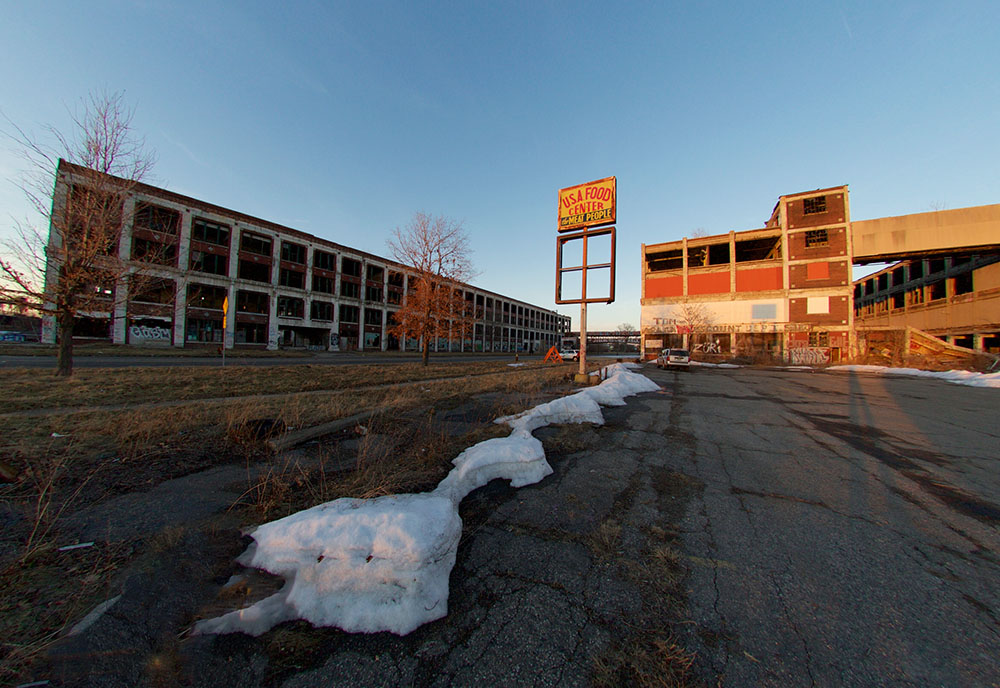
1899
The first Packard is built at Packard Electric, founded in Warren, Ohio, by brothers James and William Packard.1902
Detroit investors, led by Henry Joy, buy controlling interest in Packard Motor Car Co.1903
Packard moves into new factory, designed by Albert Kahn, along East Grand Boulevard.1905
Kahn designs Building #10, the first factory ever built of reinforced concrete. He revolutionizes the design of factories nationwide.1918-19
Packard builds Liberty engines at the plant for U.S. military aircraft.Late 1920s
Packard becomes the dominant luxury car in the U.S., outselling Cadillac and other competitors combined.1940-45
Packard builds aircraft and marine engines for the U.S. military and World War II allies. At peak production in 1943, the company has 36,000 employees, almost all at the Detroit plant.1954
The last Packard is built at the East Grand Boulevard plant; Packard buys out Studebaker, a higher-volume carmaker based in South Bend, Ind., and becomes Studebaker-Packard.1956
Last Packard built in Detroit, at a facility on Conner Avenue.

Silverghost: my $.02 tempered with/ adapted from “The rise and Fall of the Packard motor car company” by Ward
1. Packard’s preference to pay stockholder dividends over re-investment in new, more technically advanced product.
2. The failure to merge with other independants as far back as the 20’s or 30’s, when GM (as re-designed by Sloan) and Walter P. Chrysler showed American and the world how to combine strengths and maintain (or gain) market share.
3. Abdicating the Luxury market after the war, being stuck in the middle–largely the effect of the 120 line managers rising to the top.
4. The out-and-out plainess of the 24-26th series cars coupled with their outdated powertrains (see No.1) and the inability of the dealer network to deal on those cars in comparision to their big 3 rivals.
5. (big personal opinion here) is that Packard, as a corporation was “a nice guy” in terms of competition, labor relations, dealership relations, etc. Ford and Chrysler in particular were scrappy individuals when it came to these topics/behaviors, and were not nice guys. It’s always been a cut throat business. Packards were cars built “for gentlemen, by gentlemen” The world stopped supporting that model with their buying habits. I.E. Snoop Dog sells a lot more records than Johnny Mathis these days.
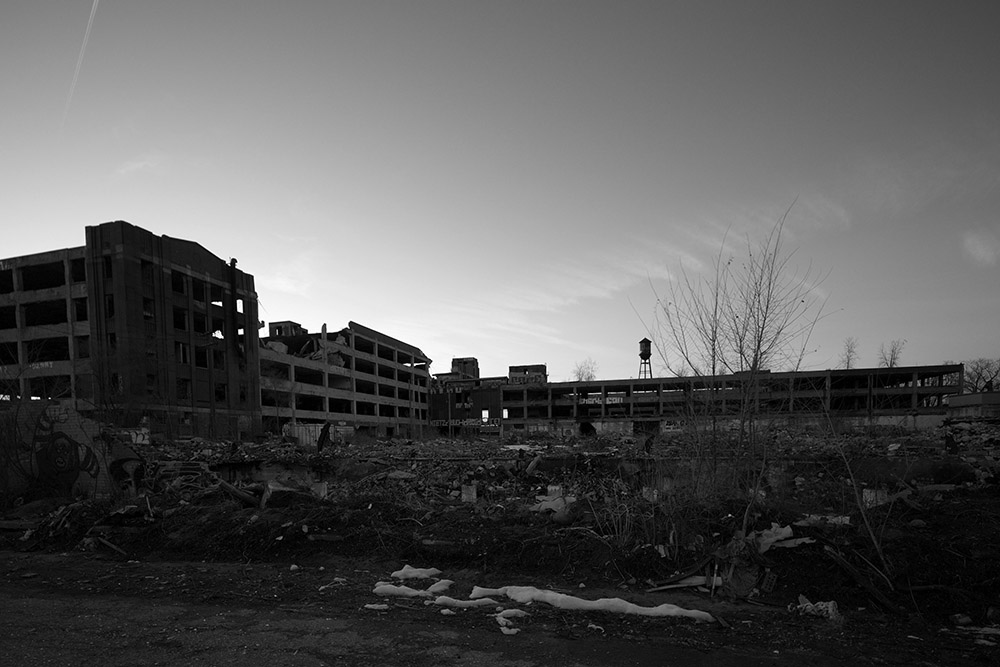
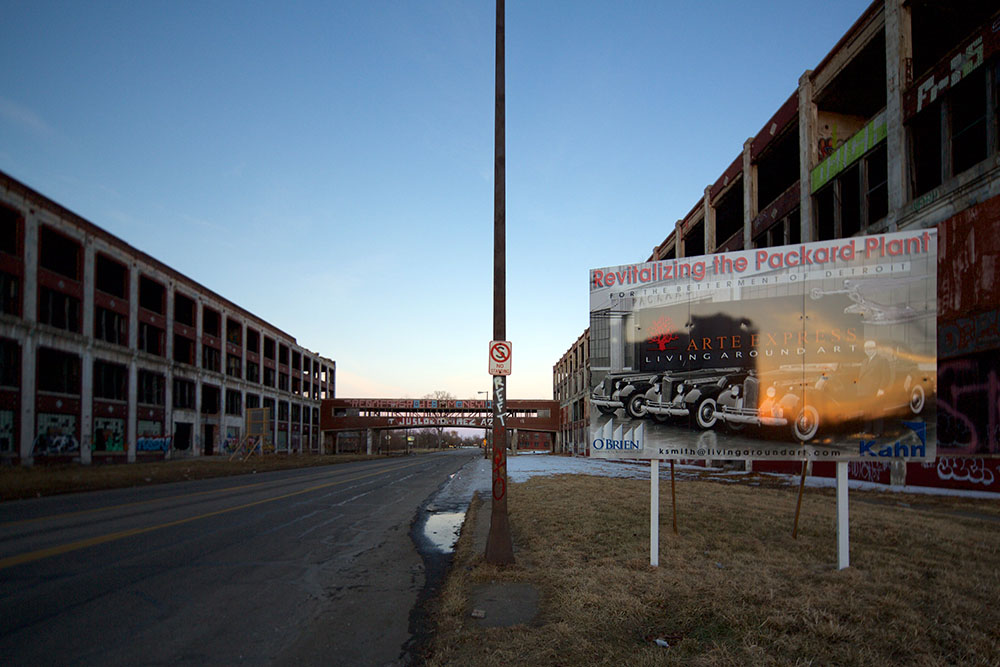
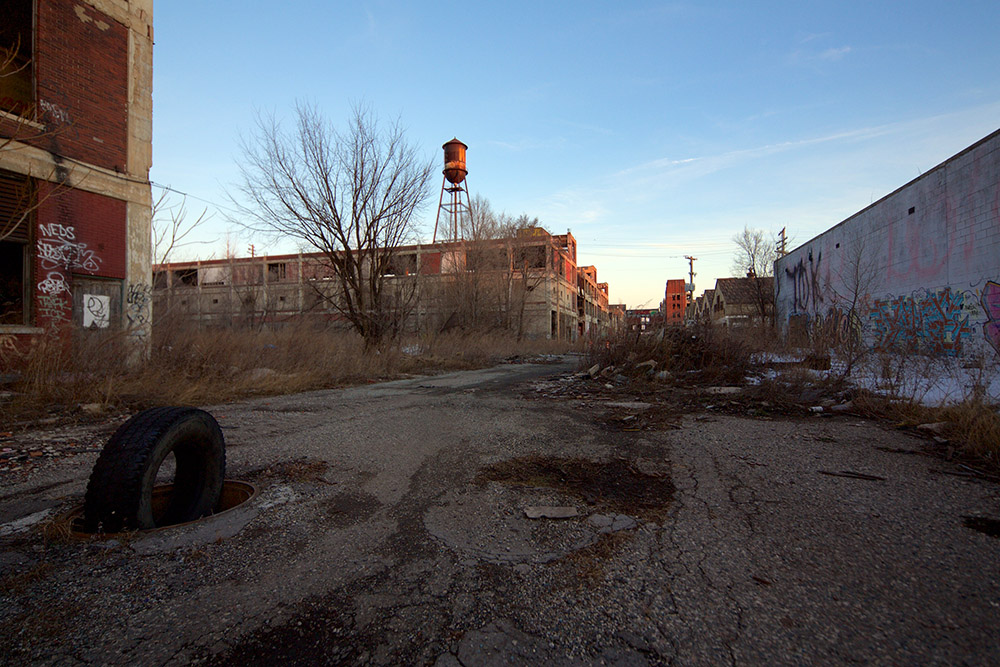

Abandoned America: The Packard Plant
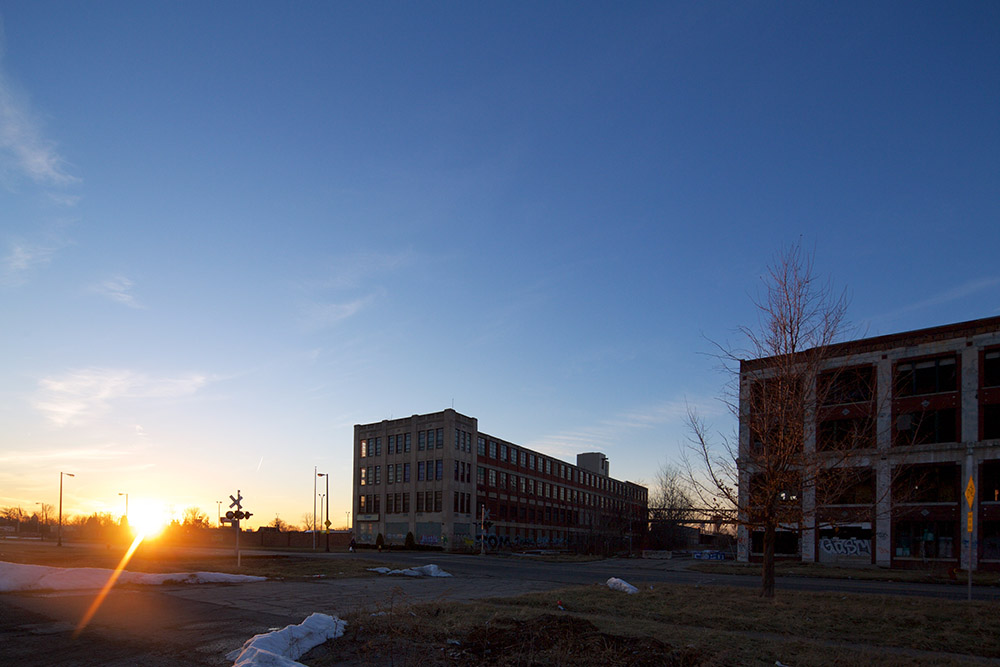
“Largest Abandoned Factory in the World.
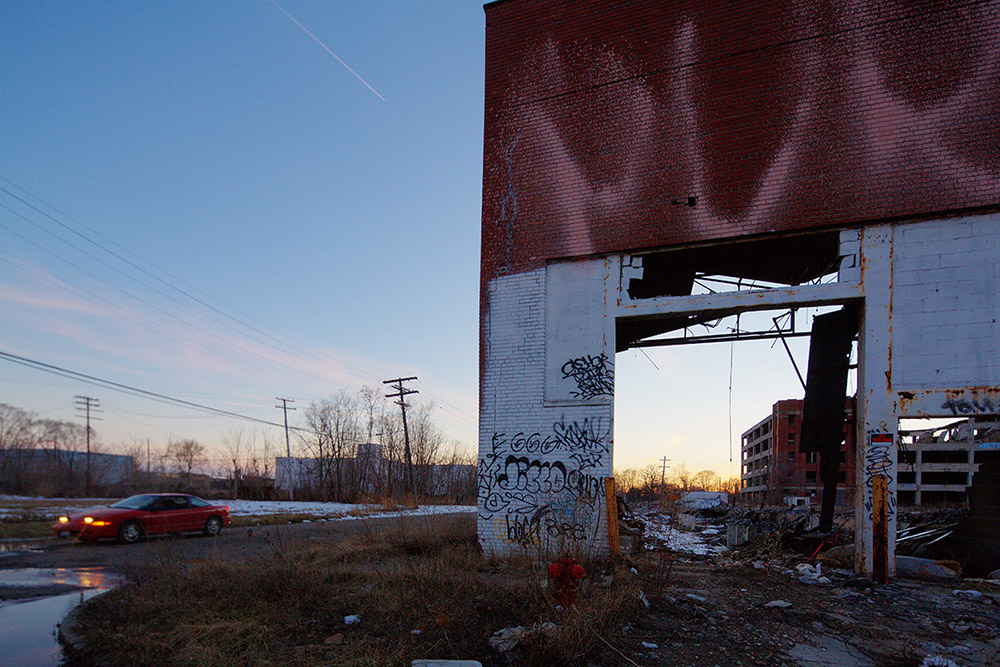
While wondering around the Packard Plant, I remembered an earlier visit to Turin’s Lingotto.
Panorama: Lingotto Pinacoteca Giovanni e Marella Agnelli.
If you go, contact Pat or Kim at Show Me Detroit for a great drive around the Motor City.
Detroit, full of history and urban renewal reminds me of Berlin and vice versa.
Postscript: Fernando Palazuelo purchased the plant via a county tax foreclosure auction for a mere $405,000 in late 2013.
Japanese Electric Cord Photography
Andreas Gefeller prends en photo les installations électriques dans la rue au Japon en se plaçant à l’endroit où le poteau les soutenant devrait se trouver.
Il y a plus d’images sur son site.
A day in the war between the city and its mountains.
The San Gabriel Mountains are waging war on Los Angeles and Ed Heinlein’s chainsaw is screaming in the late afternoon sun. It’s January 2015 and Heinlein, who has a friendly paunch and paws sheathed in mud-stained work gloves, is carving up avocado trees. They were drowned the previous year when a series of mud freight trains roared out of the hills above his house. “Welcome to mud central,” says Heinlein, “The assistant fire chief tells me it’s the most dangerous property in L.A.”
Heinlein is a retired elementary school teacher, current Christian minister, and has a preacher’s tendency to speak in terms of fire and brimstone. He lives in Azusa, a scenic nook in the foothills of the San Gabriel Mountains, which rise 10,000 feet above the city of Los Angeles. Aware that the mountain range’s mud war is far from over, Heinlein has spent more than $100,000 to protect his property behind a trio of steel and concrete walls. Immediately surrounding his home is a final barrier, consisting of about 400 sandbags, 60 sheets of plywood and heavy plastic sheeting. It is a mighty fortification, so complete that Heinlein and his family cannot even exit their backdoor.
“This isn’t a supply chain, it is a ritual Apple is performing to bring themselves up to the standards necessary to compete against companies with centuries of experience.”
Jonny Ive often speaks of care. It is an odd word to use as it doesn’t imply the traditional notion of “craftsmanship” in the classic, handmade sense. Nor does it imply quality or precision in the way a Japanese car manufacturer or German machine tool maker would. “Care” implies a respect for the raw materials and end result, with little concern about what it takes to link those two ends of the production chain together, and we see that highlighted with the Watch. Apple could very easily have forgone forging to create stainless steel cases, just like everyone else. Hardening gold alloy with cold working could have been eliminated, putting them on par with the rest of the industry. Nobody will see or feel the inside pocket for the microphone on the Sport, yet it has been laser finished to perfection.
I see these videos and I see a process that could only have been created by a team looking to execute on a level far beyond what was necessary or what will be noticed. This isn’t a supply chain, it is a ritual Apple is performing to bring themselves up to the standards necessary to compete against companies with centuries of experience.
